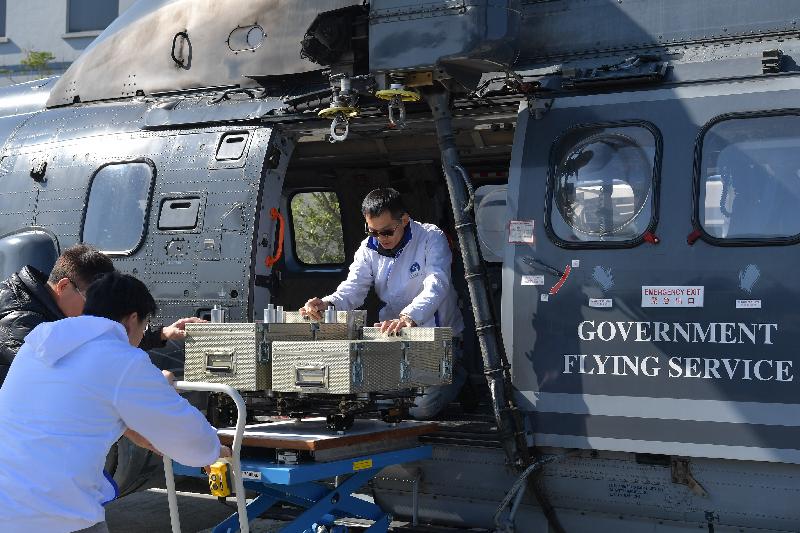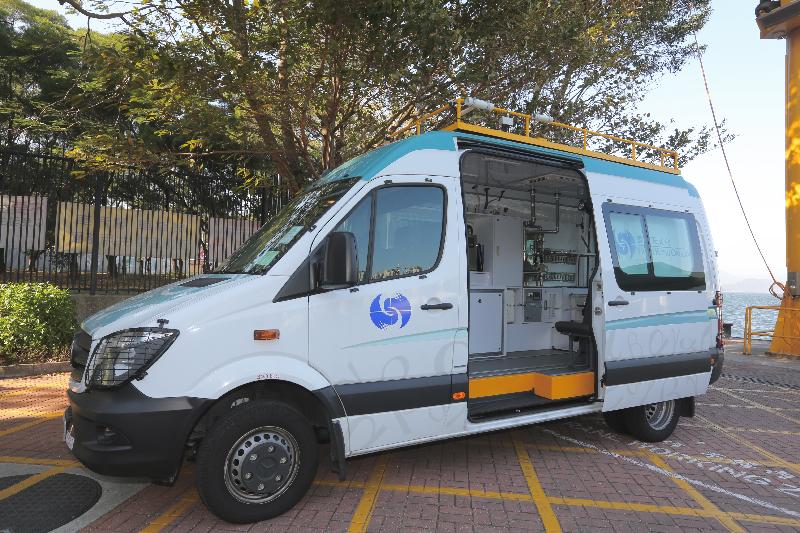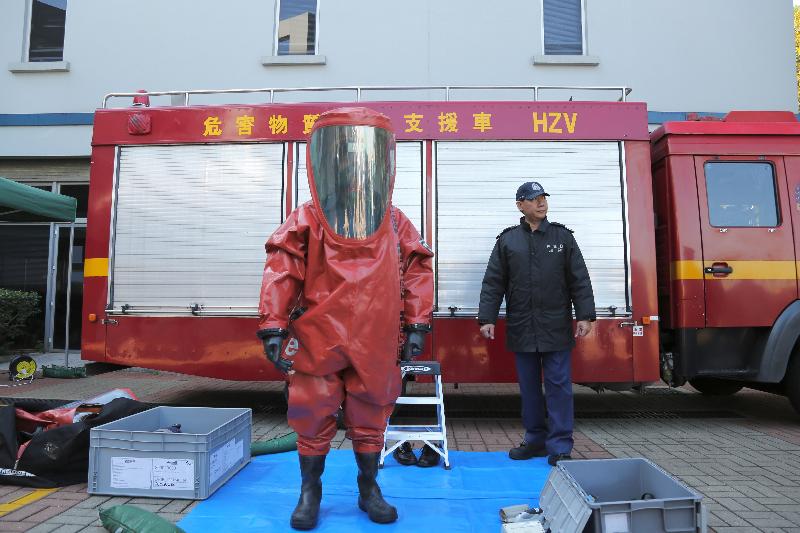Daya Bay Contingency Plan exercise continues (with photos/videos)
*****************************************************************
The starting scenario of the exercise this morning simulated fault events at the Guangdong Daya Bay Nuclear Power Station (GNPS), which led to an off-site emergency situation involving a release of radioactive materials. Relevant government bureaux and departments co-ordinated various measures to respond to the incident. The simulated scenarios in the afternoon are as follows:
"To minimise the health risk to citizens, relevant government departments immediately conducted environmental radiation monitoring and assessment as well as provided timely updates on the situation. Among them, the Hong Kong Observatory (HKO) carried out an aerial survey with the use of Aerial Radiation Monitoring System (ARMS) installed on a helicopter of the Government Flying Service. The ARMS consists of a system control unit and two sets of sodium iodide type gamma ray detectors, and is capable of detecting and tracking radioactive plume in the atmosphere, and monitoring radioactive materials deposited on the ground. Radiological Survey Vehicles were also deployed by HKO to collect samples in different locations for radiological surveys and radiation data collection.
All the aerial and ground data collected was sent to the HKO for further analysis. Measurement results were shared among bureaux and departments for their follow-up actions. Relevant information on the analysis was also announced through various channels in a timely manner to allay public anxiety.
The damage to the reactor unit was largely brought under control subsequent to urgent repair efforts of the GNPS staff. It was expected that the release of radiological materials to the environment would stop after the re-activation of the safety system."
In the exercise this morning, the Secretary for Security, Mr John Lee, attended the simulated meeting of Chief Executive’s Steering Group and offered advice to the meeting, having regard to the prevailing situation. He inspected the aerial and ground radiation monitoring devices at Ma Liu Shui Marine Police Base in the afternoon, followed by a visit to the HKO headquarters to observe radiation monitoring and data analysis work. Mr Lee said that all participants in the exercise including representatives from various government bureaux and departments actively engaged in exercise activities to test and enhance the Government’s capabilities in dealing with serious nuclear accidents which might affect Hong Kong, as well as the effectiveness of the DBCP.
Mr Lee added that in order to ensure Hong Kong’s nuclear emergency preparedness keeps up with the times, personnel from relevant departments regularly update their training; and would study practical experiences of other countries in nuclear contingency planning to enhance their professional knowledge. That, when coupled with high-tech devices, would engender confidence in the Government’s ability to adopt professional countermeasures in the event of nuclear accidents which may affect Hong Kong; and minimise public health risks to Hong Kong people.
To heighten the professionalism of the exercise and to enhance the Government's response capabilities, the Government has engaged the Institut de Radioprotection et de Sûreté Nucléaire, France's public expert organisation in nuclear and radiological risks, to be the consultant for the exercise. Experts from National Nuclear Emergency Response Office, National Nuclear Safety Administration, Nuclear Emergency Committee Office of the Guangdong Province, Nuclear Regulation Authority of Japan, Radiological Protection Advisory Group in Hong Kong, GNPS, Lingao Nuclear Power Station Safety Advisory Committee, Hong Kong Nuclear Society, Hong Kong Institution of Engineers, Hong Kong Radiation Protection Society, Hong Kong Association of Risk Management and Safety, as well as members of the Legislative Council were also invited to observe the exercise and offer advice to the Government.
On public education, the Security Bureau has collaborated with the City University of Hong Kong and CLP Power Hong Kong Limited to include information on the DBCP in the university’s CLP Power Low Carbon Energy Education Centre to promote public awareness of the DBCP. The Government will sustain relevant public education effort, including arranging seminars on the DBCP for students in collaboration with schools and organising mini-exercises, to enhance public awareness of the government’s nuclear emergency responses.
The exercise will continue tomorrow (December 21).
Ends/Wednesday, December 20, 2017
Issued at HKT 21:36
Issued at HKT 21:36
NNNN
Photo
Audio / Video
Inter-departmental exercise to test Government's response capabilities on Daya Bay Contingency Plan
Daya Bay Contingency Plan exercise continues








